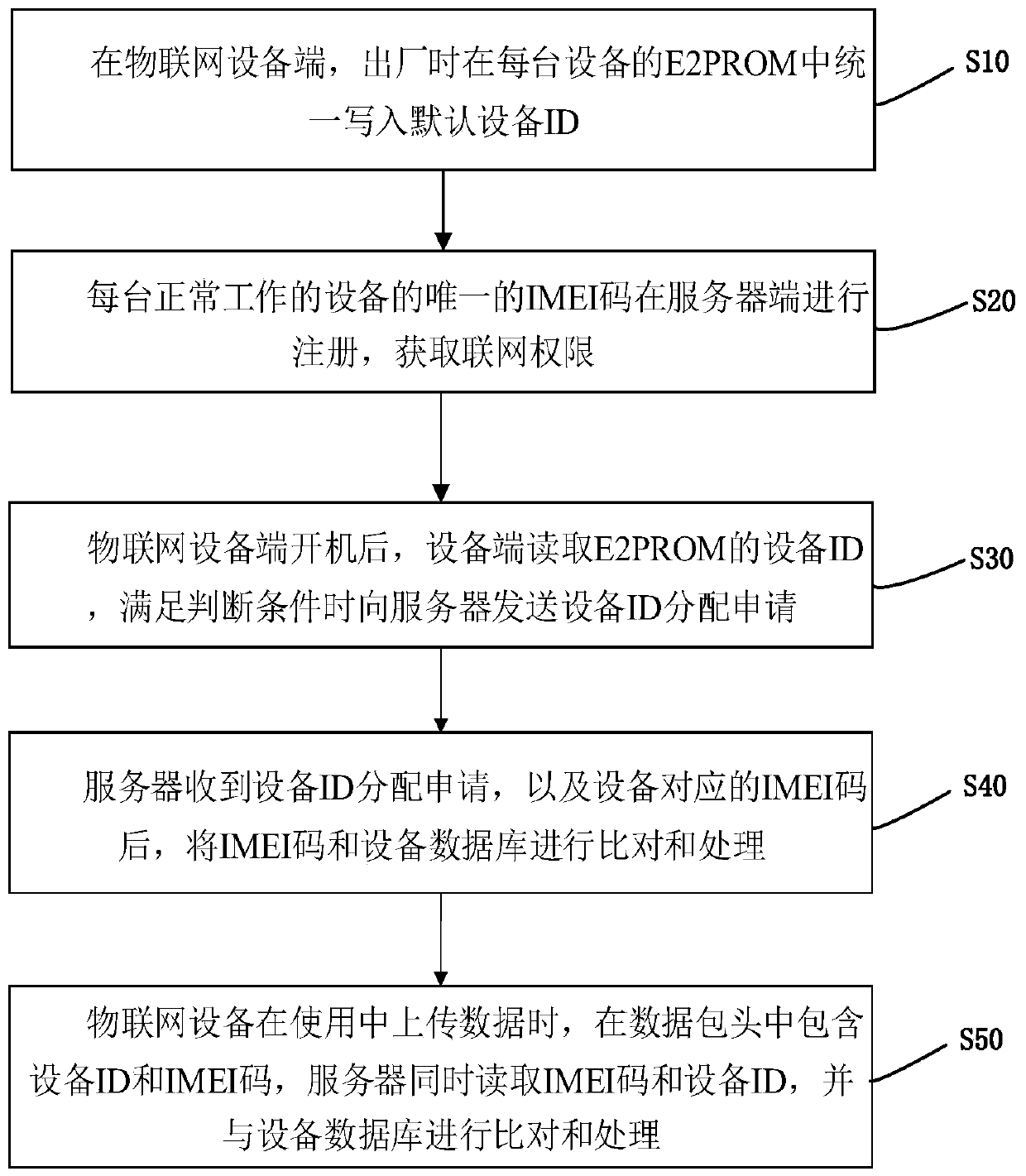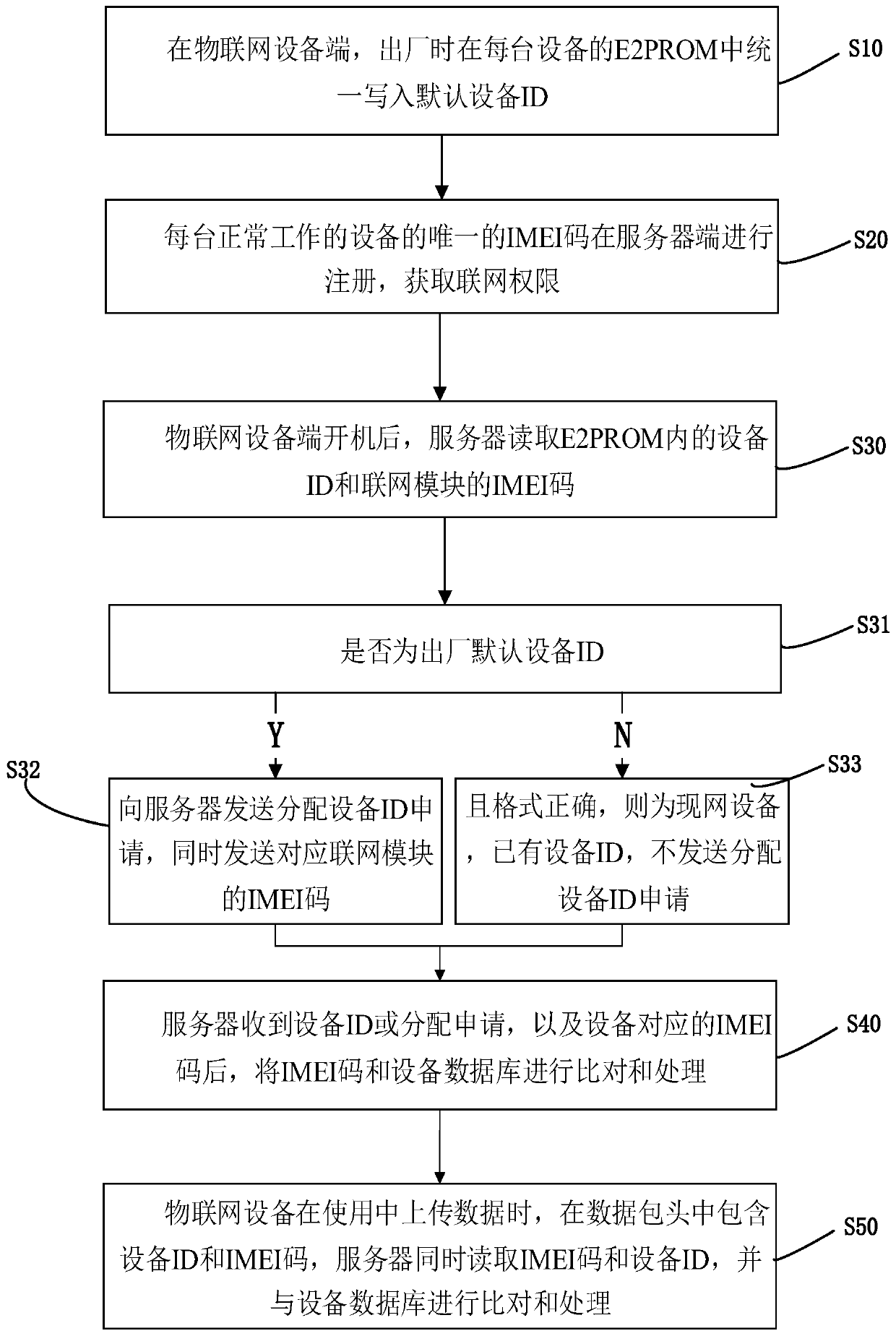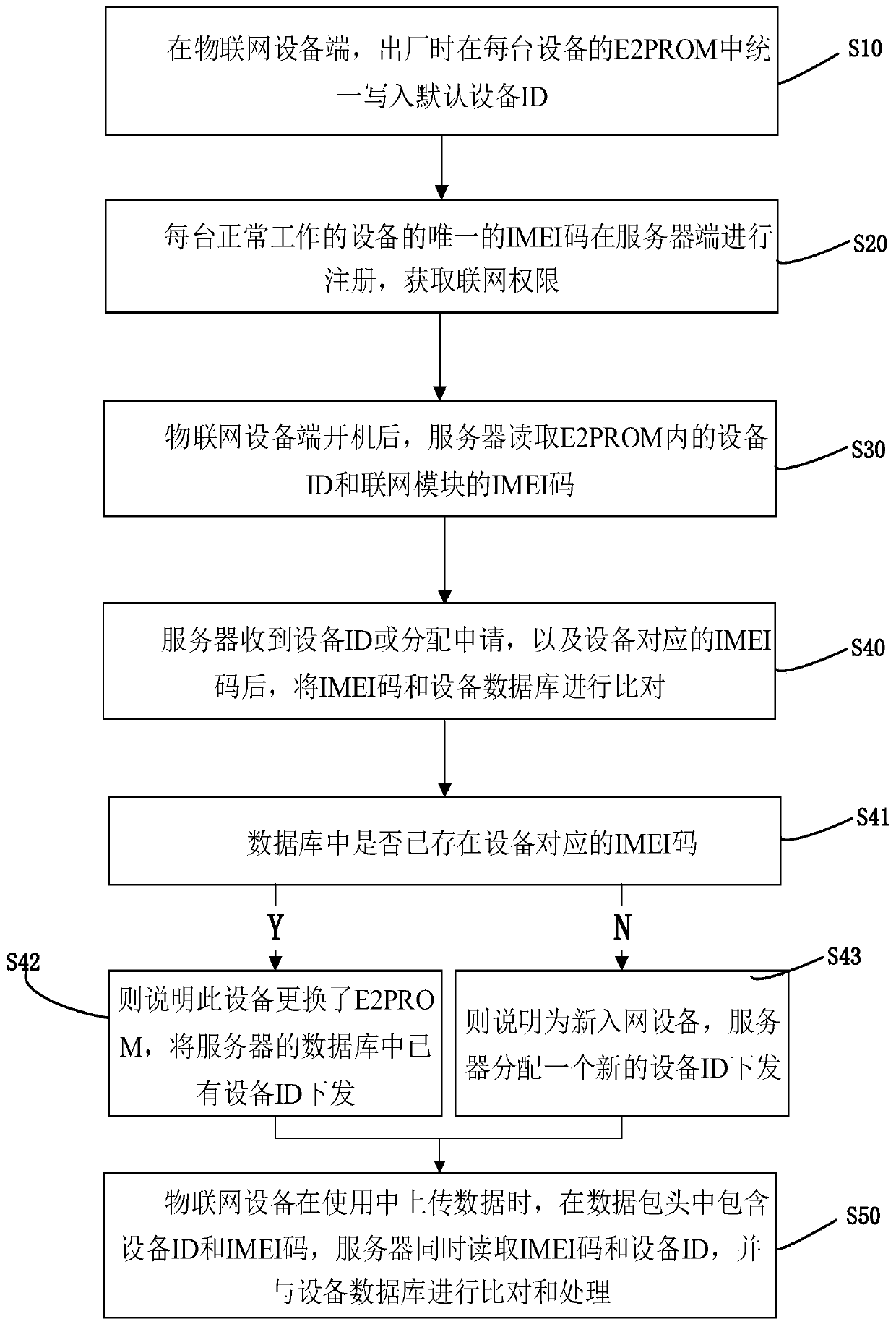Internet of Things device ID intelligent distribution method
An Internet of Things device and intelligent distribution technology, applied in the field of Internet of Things communication, can solve problems such as loss of device ID information, confusion of maintenance data, and inability to judge which device the data belongs to, so as to avoid confusion
- Summary
- Abstract
- Description
- Claims
- Application Information
AI Technical Summary
Problems solved by technology
Method used
Image
Examples
Embodiment 1
[0036] see figure 1 , the invention discloses a method for intelligently assigning IDs of IoT devices. The IoT devices include a networking module and E2PROM. The networking module is assigned a unique IMEI code when it leaves the factory. The E2PROM is used to store the device ID. The smart allocation method includes the following steps:
[0037] S10, on the IoT device side, the default device ID is uniformly written in the E2PROM of each device when leaving the factory;
[0038] S20, the unique IMEI code of each normal working device is registered on the server side to obtain the network permission;
[0039] S30, after the Internet of Things device is turned on, the device reads the device ID of the E2PROM, and sends a device ID allocation application to the server when the judgment condition is met;
[0040] S40, after the server receives the device ID allocation application and the IMEI code corresponding to the device, compares and processes the IMEI code with the devic...
Embodiment 2
[0046] see figure 2 , S30, after the Internet of Things device is turned on, the device reads the device ID of the E2PROM, and when the judgment condition is satisfied, after sending the device ID allocation application to the server, the following steps are performed:
[0047] S31, judging whether it is a factory default device ID;
[0048] S32, if yes, send an application for assigning a device ID to the server, and at the same time send the IMEI code of the corresponding networking module;
[0049] S33, if no, and the format is correct, then it is an existing network device with an existing device ID, and no application for assigning a device ID is sent.
[0050] After the Internet of Things device is turned on, the embedded program running on the device reads the device ID in the E2PROM, and there are two branches after reading: if it is 0X00000000, it will send the ID allocation request and IMEI code to the server; if it is not 0X00000000, it will It is regarded as a l...
Embodiment 3
[0052] see image 3 , S40. After the server receives the device ID allocation application and the IMEI code corresponding to the device, it compares and processes the IMEI code with the device database. The processing includes the following steps:
[0053] S41, whether the IMEI code corresponding to the device already exists in the database;
[0054] S42, if yes, it means that the device has replaced the E2PROM, and the existing device ID in the database of the server is issued;
[0055] S43, if no, it means that it is a new network-connected device, and the server assigns a new device ID and delivers it.
PUM
 Login to View More
Login to View More Abstract
Description
Claims
Application Information
 Login to View More
Login to View More - R&D
- Intellectual Property
- Life Sciences
- Materials
- Tech Scout
- Unparalleled Data Quality
- Higher Quality Content
- 60% Fewer Hallucinations
Browse by: Latest US Patents, China's latest patents, Technical Efficacy Thesaurus, Application Domain, Technology Topic, Popular Technical Reports.
© 2025 PatSnap. All rights reserved.Legal|Privacy policy|Modern Slavery Act Transparency Statement|Sitemap|About US| Contact US: help@patsnap.com



